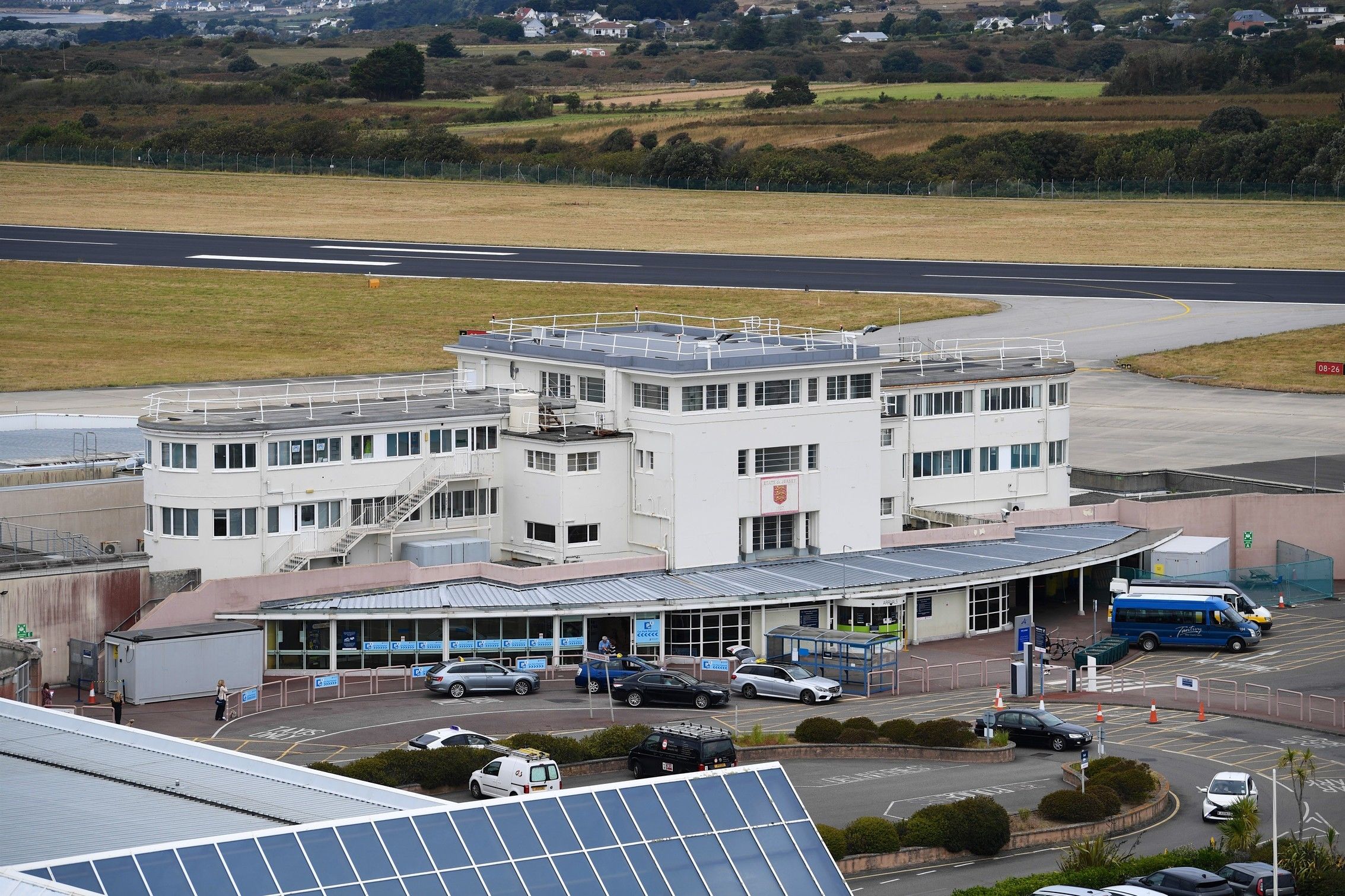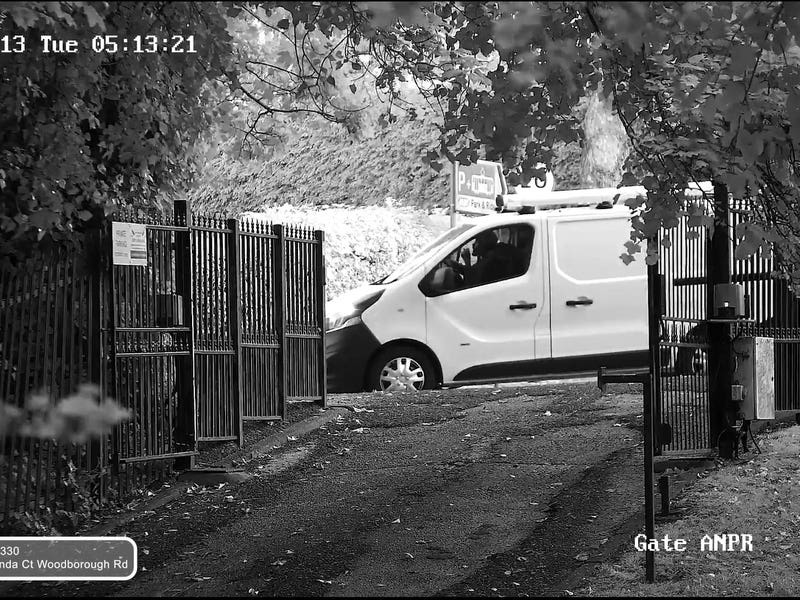Rod McLoughlin talks innovation and technology with Matt Thomas and Jenny Marek-Murray, of Ports of Jersey, and finds out how the organisation is championing sustainability
PERHAPS we shouldn’t altogether be surprised to find that one place in Jersey where there is plenty of blue-sky thinking these days is up at the Airport.
Even so, the excitement and almost messianic passion of Ports of Jersey chief executive Matt Thomas and his director of corporate services Jenny Marek-Murray on the subject of sustainability may take you by surprise.
Earlier in March they launched a new strategy – Ports of Jersey’s Planet and People Plan – the product of more than a year’s work by a project team of 20 staff. It sets out just what they are doing to contribute to our more sustainable post-pandemic world, and it prepares for a future in which new technologies are going to reshape the way we think about travel. This is no PR exercise, Mr Thomas explained.
‘We’re not trying to do a sales job on this by saying look how green we are. What we’d like to convey is that Ports actually anticipate being one of the biggest developers in the Island over the next five years as we regenerate the harbour and try to create a vibrant community there. Sustainability is a lens against which every one of our employees is being asked to hold themselves against.
‘When we were building our sustainability strategy, we set the bar very high. We want it to define how we interact with the world. We know this isn’t going to be straightforward – it’s going to be a significant challenge for us but the question we kept asking ourselves was: “If we’re not going to do this, then who is?” he said.
Ports of Jersey’s Planet and People Plan is not just about what happens at the Harbour and the Airport, important as that is. It is also about Ports’ reach into the Island, something reflected in the document’s four pillars: climate and the carbon-neutral goal; biodiversity; waste and circularity, or recycling; and people, or the relationship between Ports’ staff and the Jersey community.
‘We do expect our economy to transition to net zero because that’s the responsible thing to do but, equally, we expect to be leading by providing pathways for children to be getting into engineering or retail, fire or air traffic – not just because it’s good for us to have that pipeline of local talent who share the values but also because we want our kids to have an equal opportunity to be whatever they want to be,’ Mr Thomas said.
Leading the strategy’s development has been Ports’ director of corporate services Jenny Marek-Murray who is no less upbeat. She can already point to community projects indicative of this new relationship with the community. Staff have been working with eight Jersey schools to pass on engineering skills that have allowed some pupils to develop their own underwater robots, while others have been building sustainable sea walls at St Catherine to protect sea-grass. Meanwhile, engineers have been recycling rope at one of the marinas to create habitats for sea horses.
They are projects that exemplify a principle: a sustainable future entails thinking creatively about the opportunities which we all have to make a difference in our daily lives. And it can be applied to carbon neutrality, Mrs Marek-Murray explained:
‘We have split our goal into three things: we look at what we can do; we look at what we can do with our business partners – our airlines and our ferry operators; and we look at what we can do with our customers, the passengers who are coming through. They are three distinct lines that have to come together.
‘I’m working on the short-term stuff to get ourselves ready so that we are in the right position for people to want to work with us in the future. It’s really important to us that the strategy is taken seriously. Promoting it enables us to say that these are our deliverables for this year and then let the community hold us to account for them, so that it means something.’
What she is especially proud of is that the strategy has been built by Ports’ staff themselves, showing a similar passion for the task. ‘There’s so much stuff, it’s really scary,’ she said.
But by the end of this year, Jersey Airport is hoping to reach level three of the Airports Council International carbon-reduction scheme. It would put Jersey among 80 global airports to have achieved this status. ‘We might even get to level four,’ she adds quickly with a smile.
Travellers will already notice some differences at the Airport. A new kiosk allows you to interrogate – and offset through partnership with Durrell – the emissions generated by your flight. It also works on your phone with the new carbon-pass app, enthusiastically trialled recently by 20 local schoolchildren. The Airport is also supporting Durrell’s cans for corridors project which uses money from recycled aluminium cans to create tree corridors.
Jersey Airport already offsets its carbon footprint through its partnership with Durrell but it is not something to which Ports draw attention because offsetting is not the answer, Mrs Marek-Murray explained. The purpose of the new strategy is to help progressively to reduce the amount of offsetting to move towards a new future, one in which Ports of Jersey hopes to cement relations with carriers at the forefront of the development of emission-free travel.
This is the point at which Mr Thomas gets really excited. ‘A conversation about sustainability is the reason I got into airports,’ he said. ‘What is it? It’s the impact we have on people, on our planet and on the community.’
While few positives came from Covid-19, he believes one is the long-term impact on the way we think about transport. He says it brought into sharp focus just why Ports of Jersey were there and now it points towards a different future in which priorities are being reshaped.
‘We aren’t going to go back to where we were before. This wouldn’t just be a missed opportunity which I feel is not an option at all,’ he said, adding that expectations for emission-free flying had changed: the trajectory is a different one now.
Before the pandemic, ‘clean’ aircraft were at least 15 years away in Mr Thomas’ view. Now, he thinks we will routinely travel to Guernsey or Southampton on hydrogen-powered engines before the end of the present decade. ‘There is no doubt in my mind that it is in the 2020s now. It’s just how far into the 2020s that we’re talking about,’ he said.
Technology is developing fast but how is the transition to be achieved? With repurposed planes and retrofitted engines perhaps? Or by other means? With technological advances likely to emerge first for smaller aircraft on short-haul services, opportunities are starting to appear for Ports of Jersey to take a lead.
Gazing into a crystal ball that you can all but see in front of him on the table as he speaks, Mr Thomas acknowledges that the details of hydrogen-powered aircraft remain shadowy. We do not yet know whether the Airport will require some sort of fuel farm, or whether power could come from a different source, such as batteries, but routes like the inter-island service to Guernsey could offer an early opportunity.
‘There are an awful lot of unknowns but there’s full acceptance that this is a challenge that needs to be resolved. I don’t know when the tipping point was. It was coming anyway but I think it’s just been brought so far forward by the pandemic. Jersey is well positioned to be at the forefront of this,’ he said.
Mr Thomas thinks of Ports of Jersey as being like a conductor directing the individual sections of an orchestra. One of these is Blue Islands – whose head office is on their St Peter doorstep – while another is the Island’s autonomy over its airspace between England and France.
‘Our guys in the tower can dictate the flight paths and when you’re trying to introduce new technologies, there’s going to be plenty of testing that’s required. You want airspace that’s not like the M25 when you’re doing that,’ he said.
Although we may not be aware of it, many of us will have already witnessed for ourselves the benefits of creative thinking within the control tower at Jersey Airport. An alert air traffic controller with an environmental science degree was musing one day about the aircraft arriving at Jersey Airport. He realised that a way to reduce both noise and emissions would be to replot their incoming approach.
‘He said why don’t you do that instead of that,’ Mr Thomas said, indicating the difference between a stepped approach and a gradual descent. They checked it with the Director of Civil Aviation and the environmental improvement was duly signed-off – just like that.
‘We’ve got an airline, an airport and a regulator so what else do we need? We’re going to need a supplier who’s going to help us generate the hydrogen. The really exciting part of it is that the electrolysis process is ultimately boiling water to emit the oxygen and the hydrogen, and how you capture the two when they are separated. We are in an amazing position, as an island, in that the electricity that needs to go into that process is already clean whereas in the UK, they’ve actually got to decarbonise the electricity supply before they can do the electrolysis. I don’t think we fully appreciate the potential advantage of our clean electricity supply when we compare it to almost all of our neighbours,’ Mr Thomas said.
These are exciting times and Ports of Jersey are working with industry partners to ensure that the Island is ready for travel powered by green fuel. Post-pandemic, proprietorial concerns about intellectual property are being cast aside and breakthroughs are being shared. It all feels ‘very 2022’, as Mr Thomas puts it.
‘You are looking for the fatal flaw that says we can’t do this. I’m not finding it yet. What’s cool is that our airline partners are very open. I’d love nothing more than if Jersey was one of the test cases – one of the development centres for the new technologies that are then transitioned to some of the larger airports. It’s exciting not knowing how the story is going to unfold but the key is going to be cultivating a spirit in which we can all innovate.’






